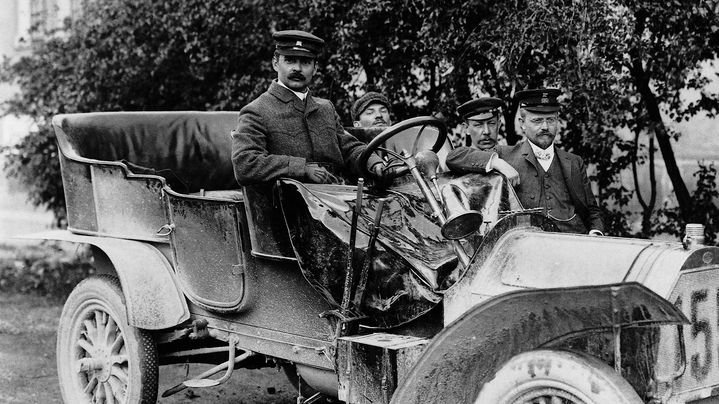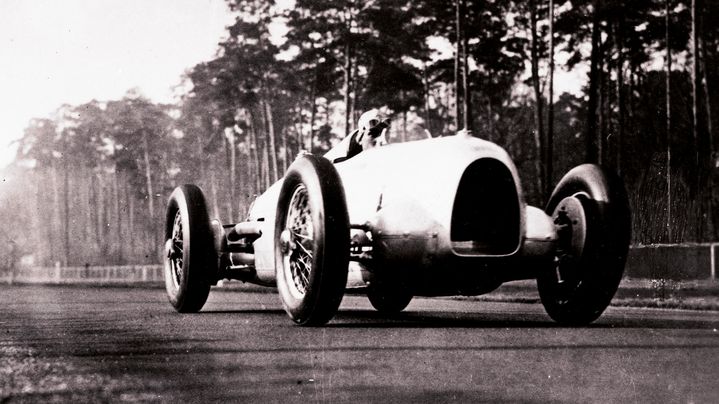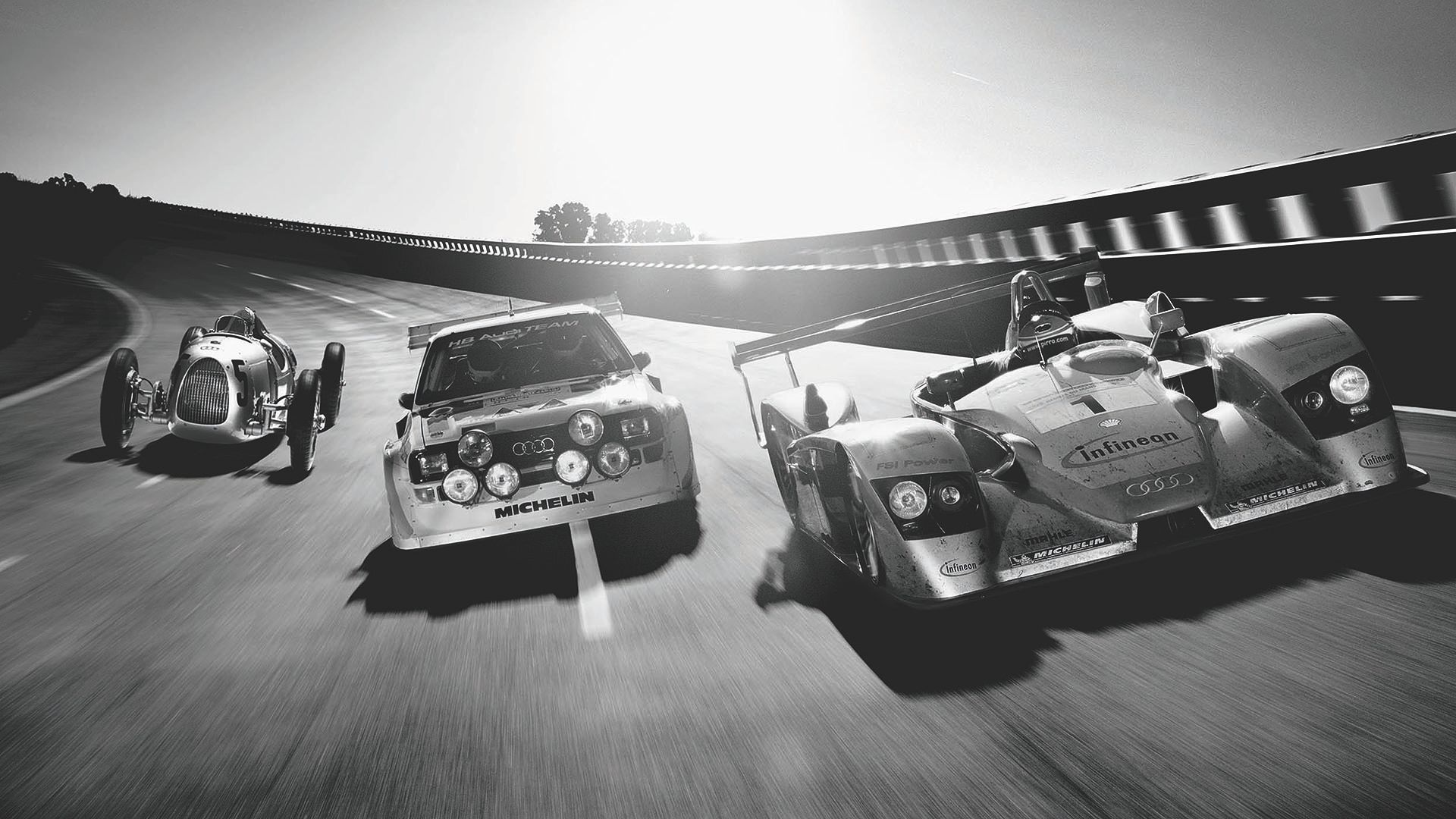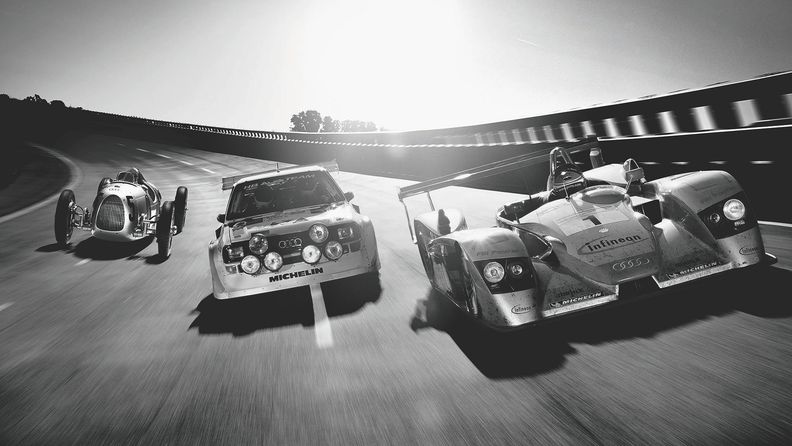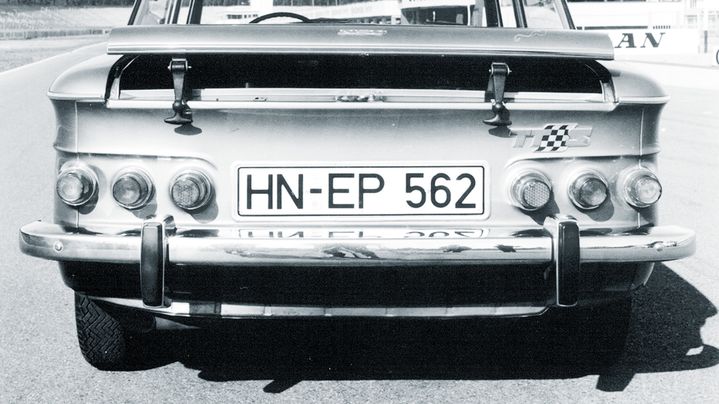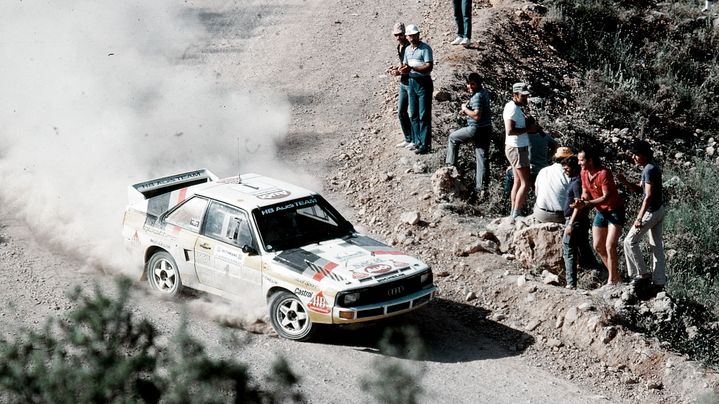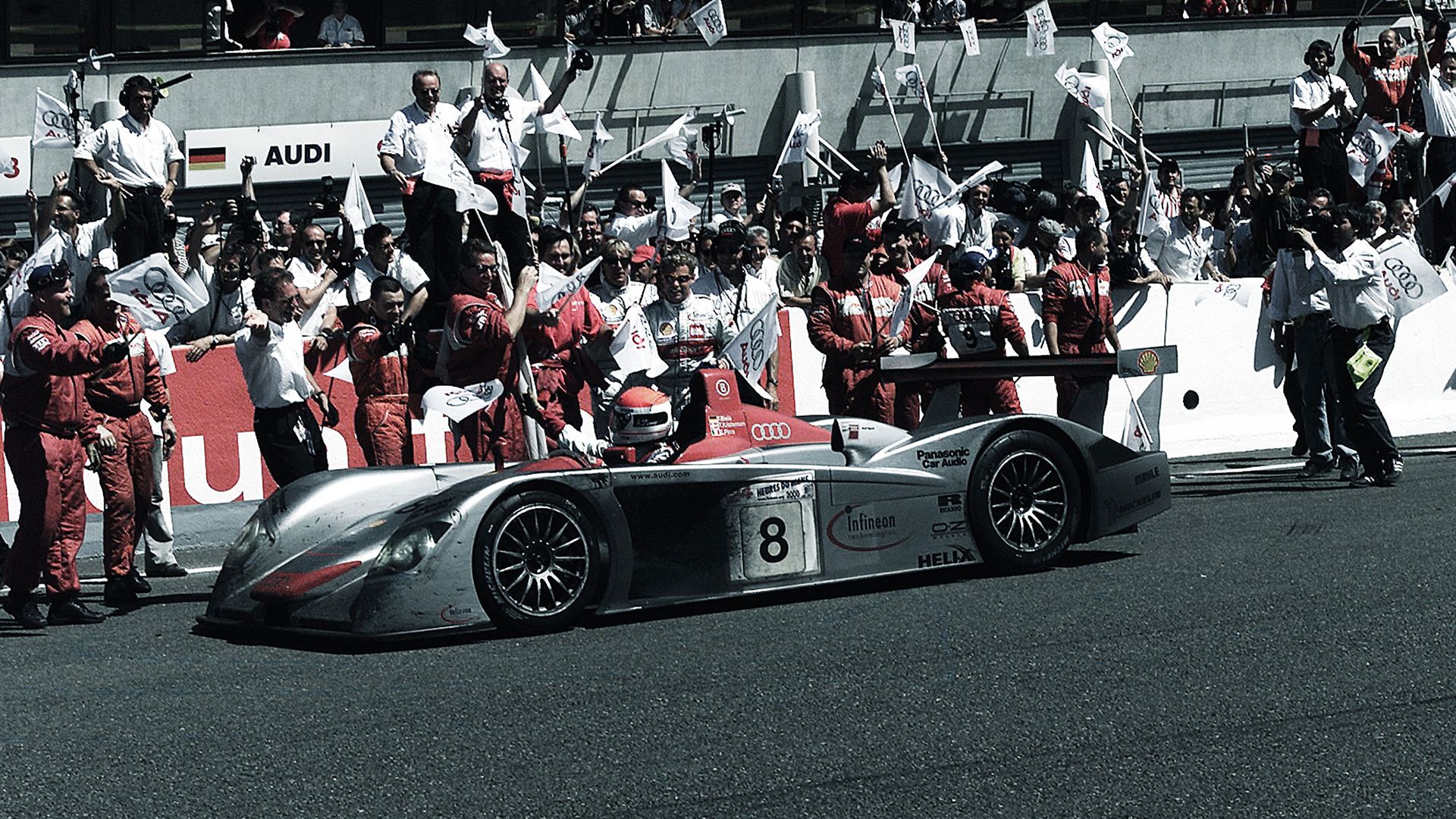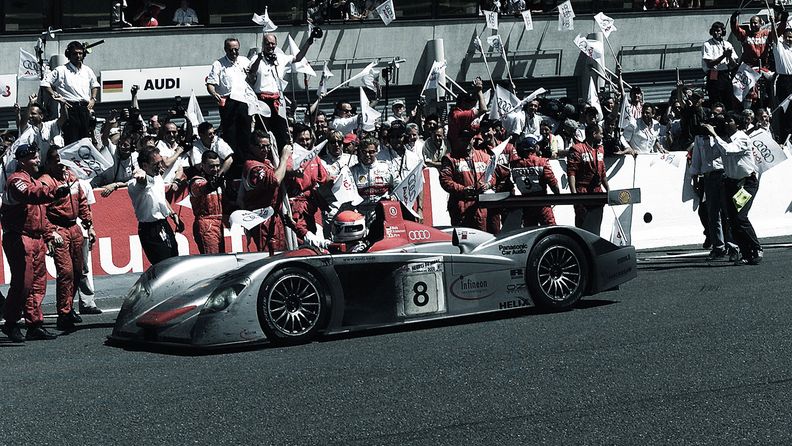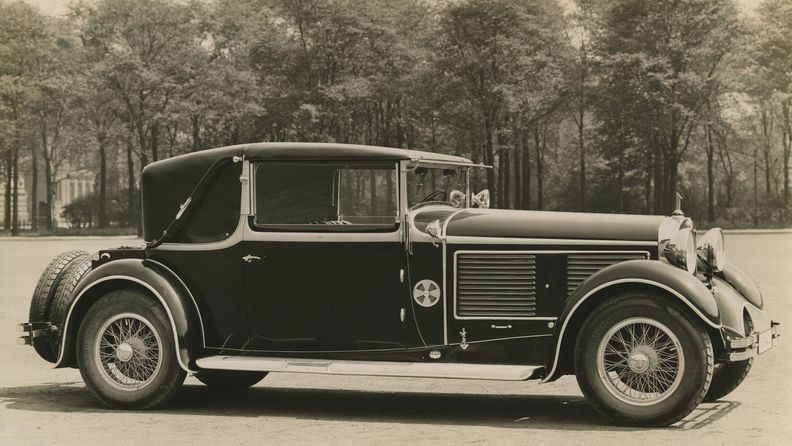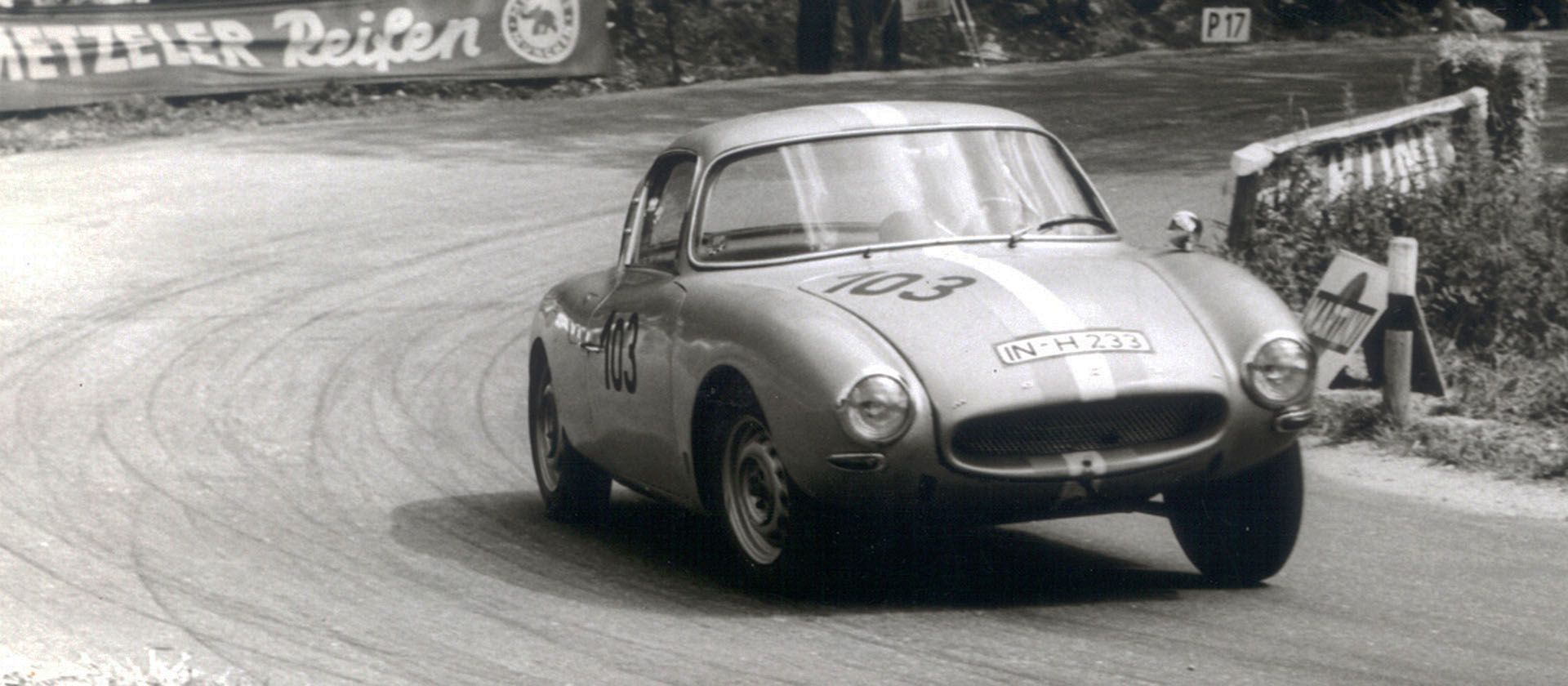
DKW in racing
DKW, founded by Jörgen Skafte Rasmussen in Zschopau, contested races successfully with two-stroke motorcycles from 1921. Victory in the ADAC Reich long-distance run in October 1921 was the start of a magnificent series of motorsport successes. DKW touring cars began their motorsport career in 1929 with modest 600cc twin-cylinder engines developing no more than 15 hp.
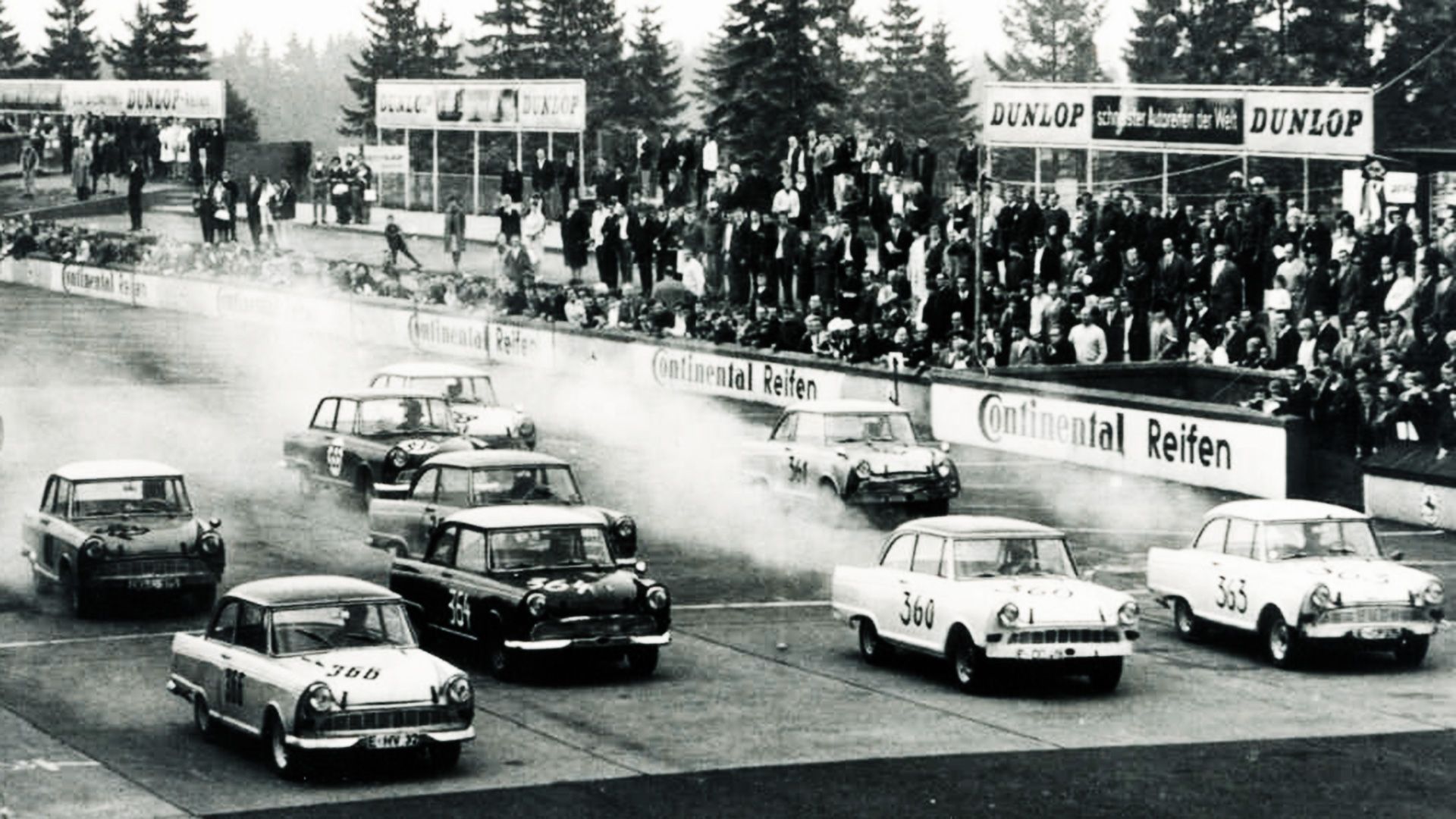
DKW cars in racing and rallying
A DKW P 15 with a wood-framed body covered with imitation leather, reached the finish line in the 1929 Monte Carlo Rally – a remarkable achievement given that, due to deep snowdrifts, the starting point in Königsberg was only reachable by crossing the ice of the “Haff”.
Ove Rasmussen, son of the company’s founder, drove the first DKW with front-wheel drive in the Eibsee race in February 1931. Thanks to its front-wheel drive, the car was faster than even Bugatti and Amilcar, its strongest rivals, but the sensational demonstration was unfortunately cut short by a slide that ended in a bank of snow.
Thousands of successful race outings followed: whether with two-stroke engines and front-wheel drive or four-cylinder charge-pump engines and rear-wheel drive, DKW cars were there: on the Avus and Nürburgring circuits, at the International Alpine rally, at the Liege-Rome-Liege event, hillclimbs all over Europe, the East Prussian Run, the Three-day Harz Run, and the Brandenburg Off-Road Trial. At the 2,000-kilometre German Rally of 1934 alone, DKW took home 60 percent of the gold medals.
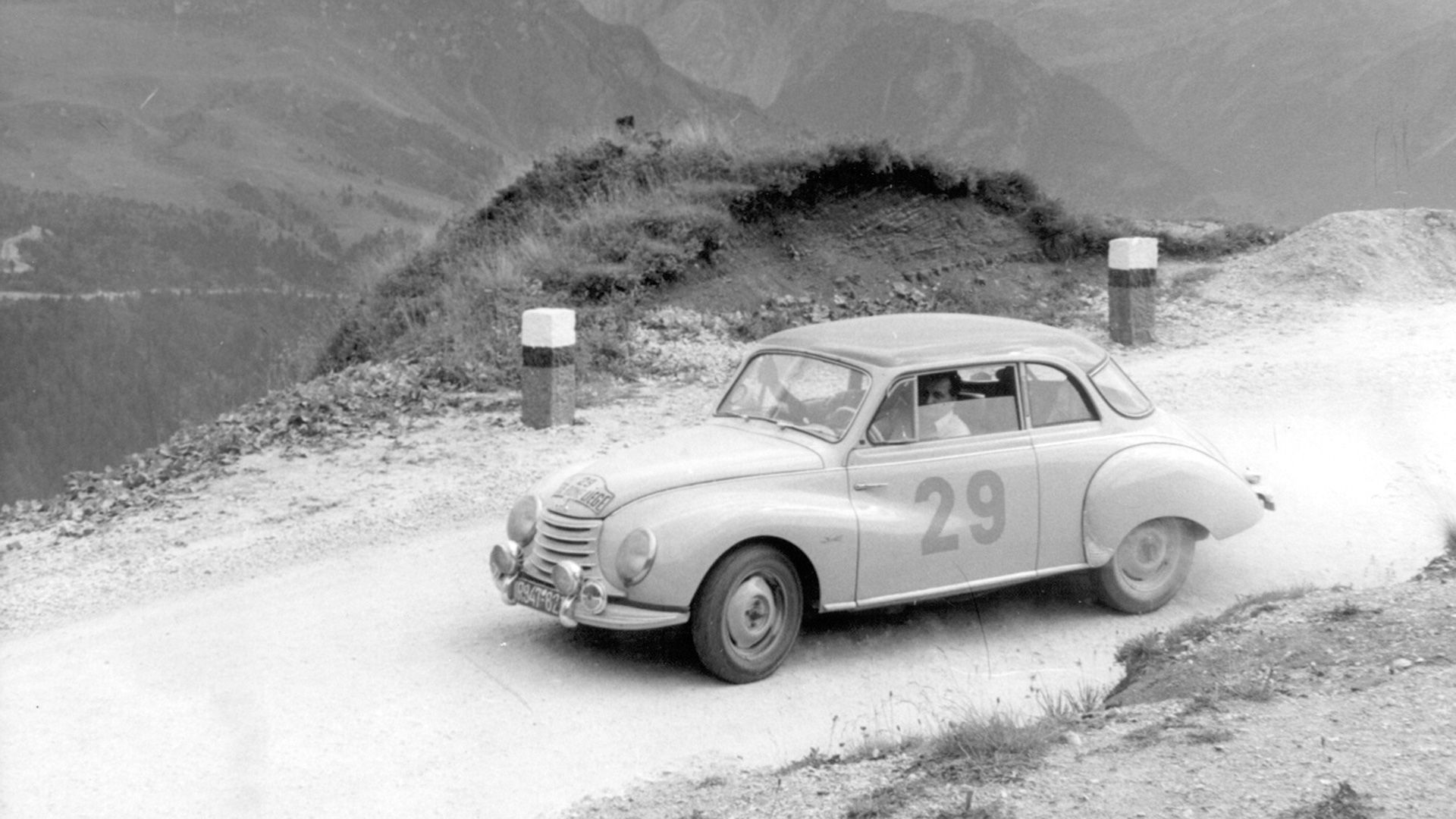
1954 European Rally Championship for DKW
In the hands of keen motor racing drivers, the DKW 3=6 Sonderklasse of 1953 dominated. With drivers Walter Schlüter, Gustav Menz and Heinz Meier, DKW took the first three places in the 1954 European Rally Championship, with Heinz Meier also winning the German Rally Championship title. The German Rally Championship title was defended successfully in 1955.
In 1956, a DKW 3=6 Coupé with a special plastic body set five new world speed records on the Monza circuit in Italy, after which a limited run of 3=6 Monza cars was offered for sale. From 1956, Auto Union increased factory support for private DKW entrants. An “Auto Union DKW Trophy” was contested annually from 1958 on. DKW successes increased both in Europe and further afield with the DKW 3=6, Auto Union 1000, DKW Junior and DKW F 12. The 900 and 1,000cc two-stroke racing engines’ power output was steadily increased until they were developing close to 100 bhp.
Between 1954 and 1964, DKW drivers won more than 100 championship titles, 150 overall victories, 35 team first prizes and 2,500 class victories. But when the two-stroke era came to an end at Auto Union, the factory withdrew from motorsport in the autumn of 1964.
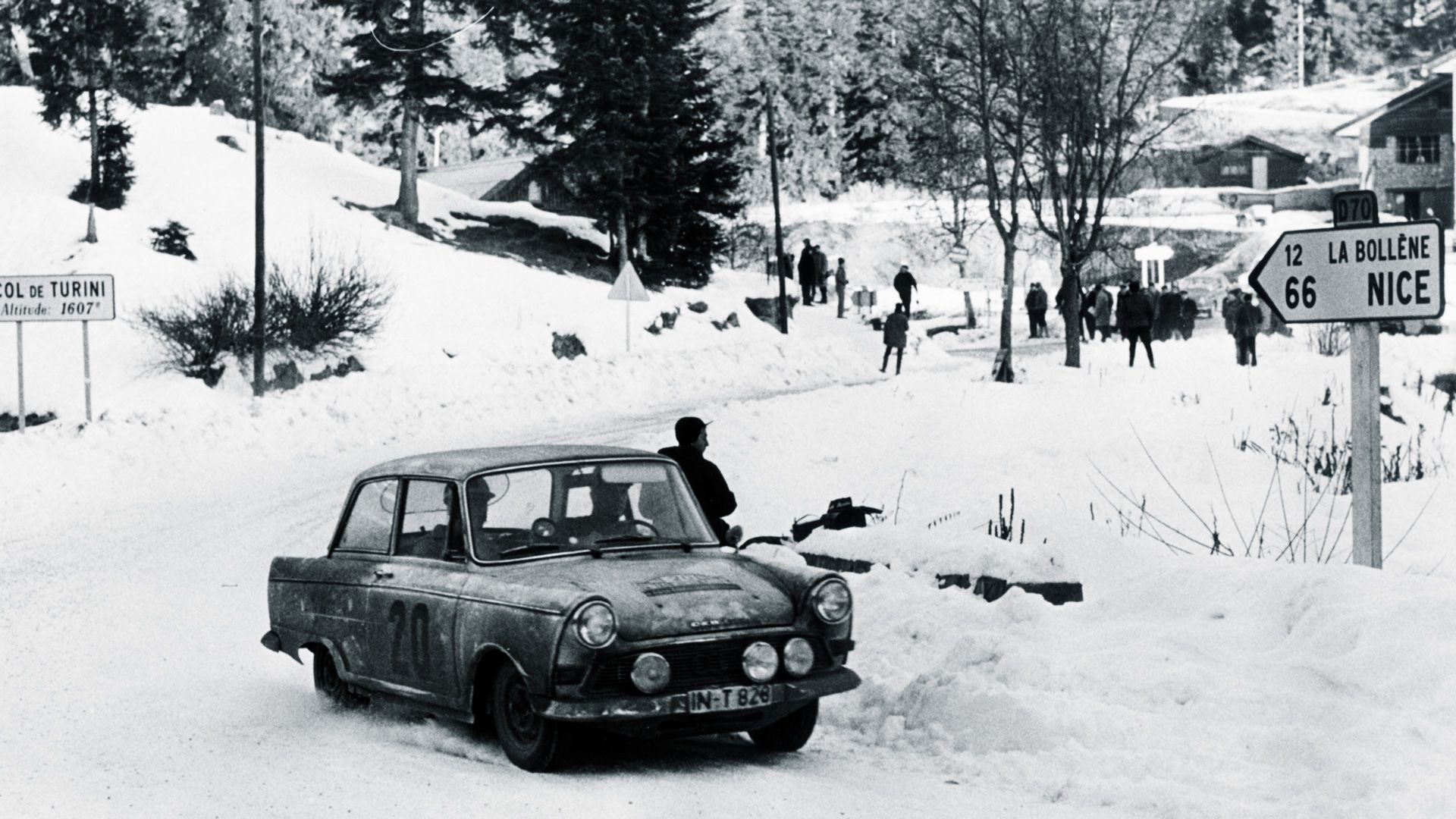
DKW IN MOTORCYCLE RACING
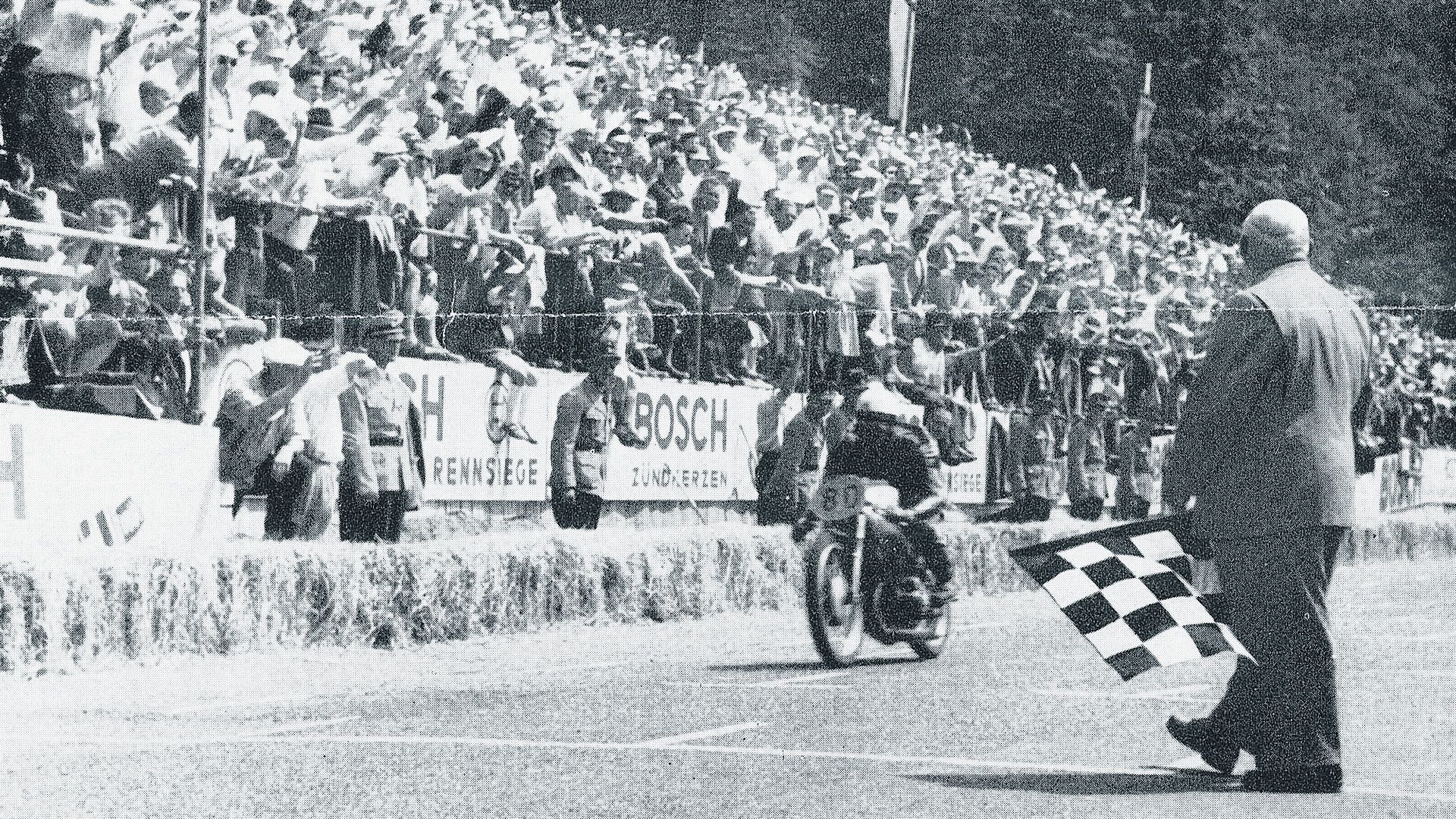
The two-stroke road to success
DKW shone in the 1920s and 1930s, with innumerable championship titles, Grand Prix victories, six-day trial successes, off-road events and record-breaking runs. Arthur Geiss, Walfried Winkler, Ewald Kluge, Toni Bauhofer, H. P. Müller, Siegfried Wünsche and the eventual Auto Union Grand Prix racing driver, Bernd Rosemeyer, scored many successes. The highlight of this era of motorcycle racing was a victory in the 1938 English Tourist Trophy race on the Isle of Man by Ewald Kluge, the two-time European champion (1937/1938). The DKW ULD 250 racing motorcycle powered by a rotary-valve engine was the first motorcycle not built in Great Britain to win the “TT” in its 30-year history. In war-ravaged post-war Germany, DKW claimed the German championship titles in the 125 and 250cc classes in 1948 and 1949, with the ex-factory driver Siegfried Wünsche crowned 350-cc class champion in 1949.
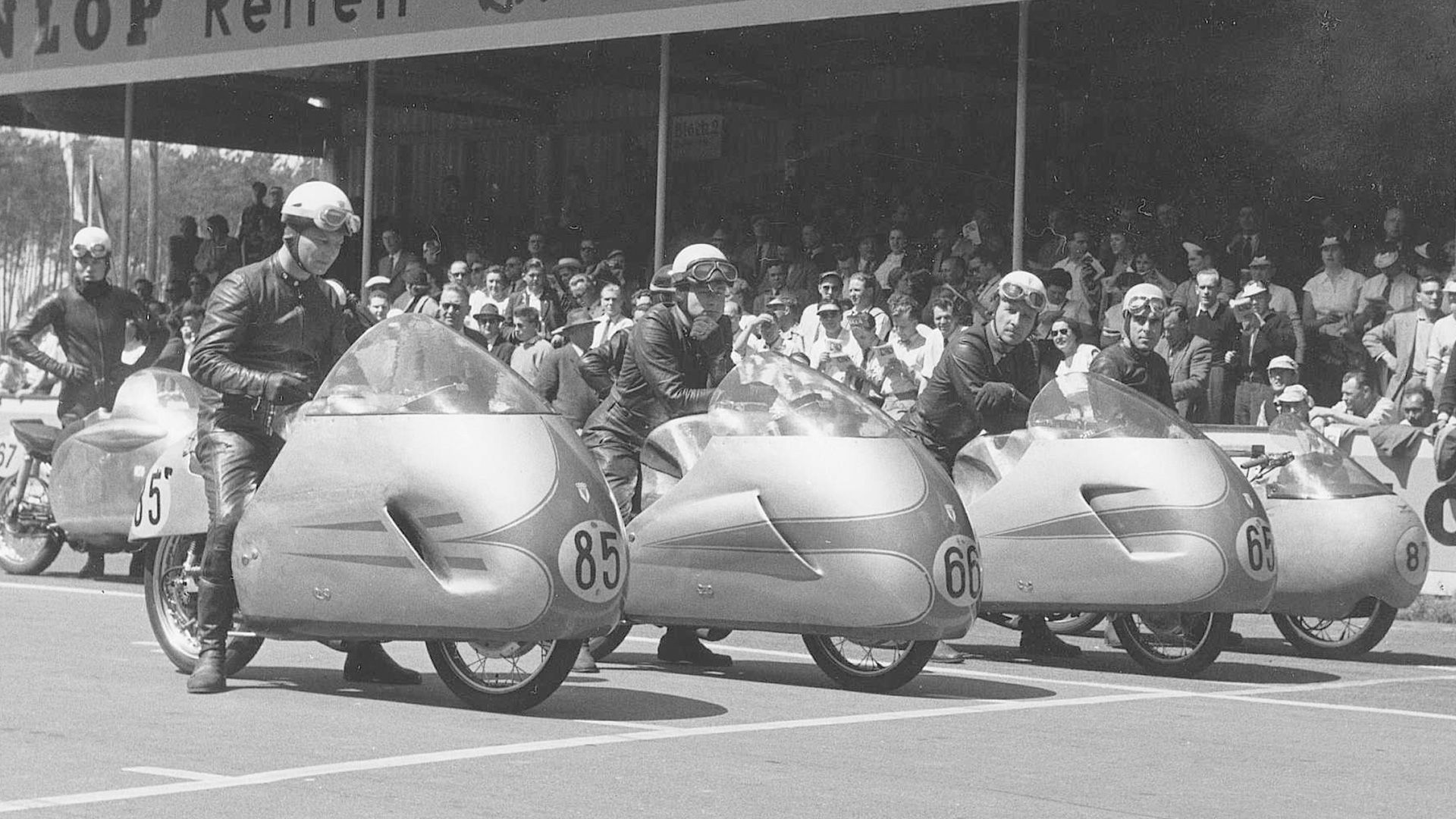
A new racing department
In 1951, Auto Union reinstated a motorcycle racing department in Ingolstadt. After the ban on supercharged two-stroke engines, naturally aspirated units had to be developed in a very short time. For the 1952 racing season, DKW surprised the establishment with a new design: a 350cc three-cylinder engine producing 38 hp at 12,500 rpm. The characteristic sound earned it the nickname “singing saw”. Kluge and Wünsche dominated at the Eilenriede in Hanover in 1952 with the new three-cylinder DKW and crossed the line in first and second places. The most outstanding rider of 1953 was Siegfried Wünsche, who brought the 1953 German championship title home to Ingolstadt in the 350cc class.
In 1955, up-and-coming driver August Hobl came third in the World Championship series and was German champion in the 350cc class. Hobl even improved on this in 1956 clinching honours as the World Championship runner up. In the German Championships he carried off two titles: in both the 350cc and 125cc classes.
Despite these achievements, the decision to retire from road racing was not surprising. Not even sporting successes could halt the decline of the motorcycle industry in West Germany. With the official conclusion of its motorcycle racing commitments in the autumn of 1956, DKW had achieved an unparalleled record of 38 German championships since 1925.
Audi worldwide
Models, products and services – switch to your country / sales region website and discover the regional diversity of Audi.
